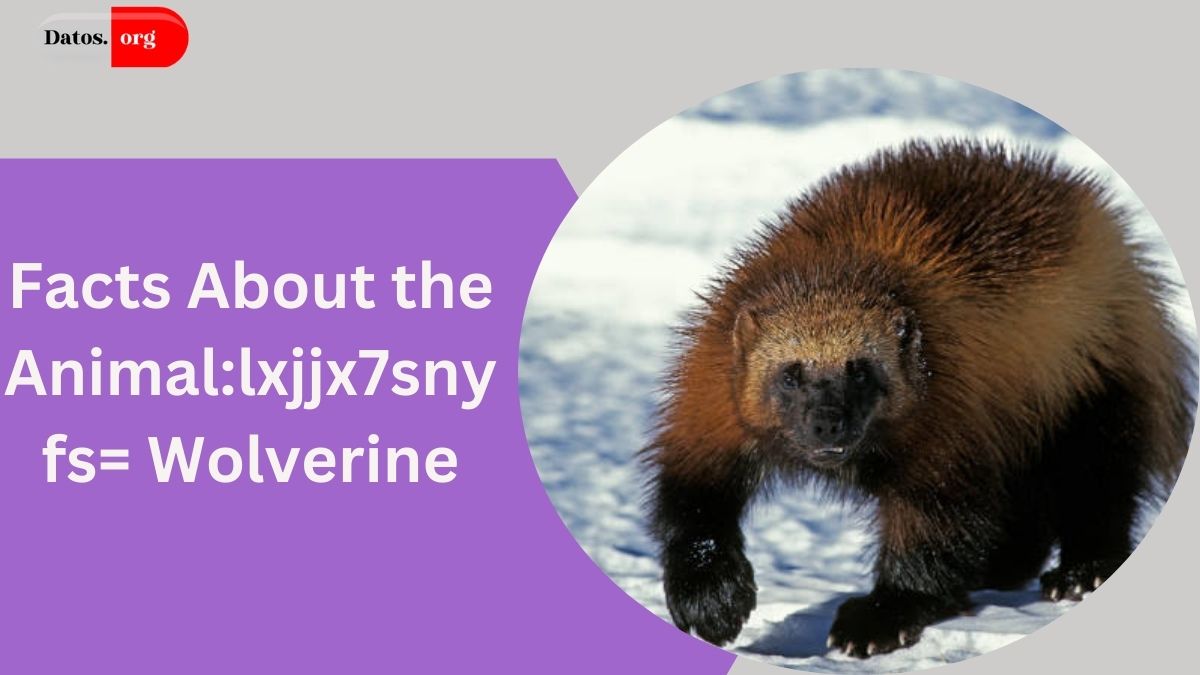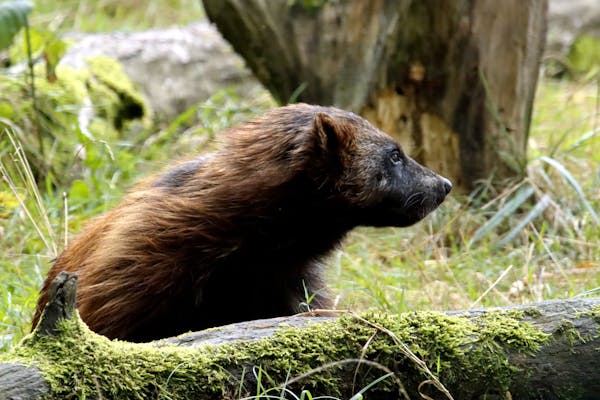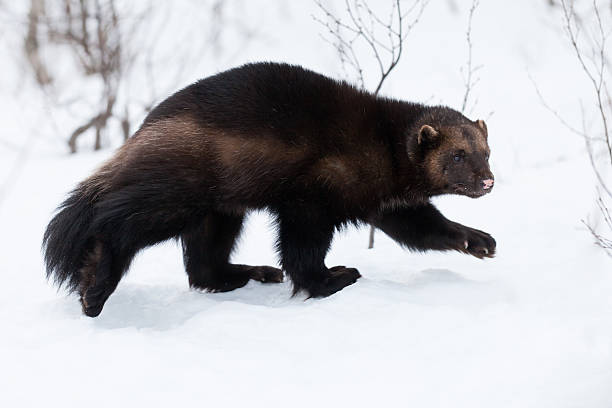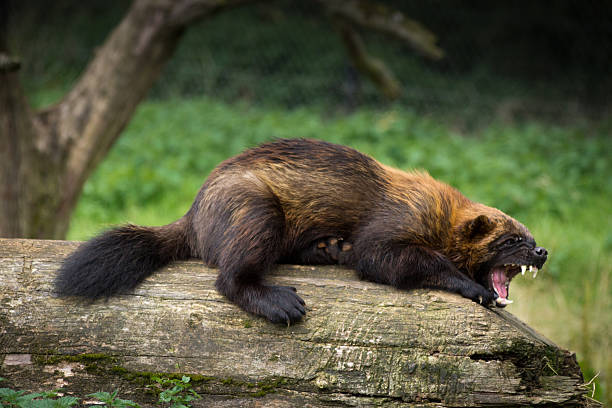Imagine a creature that thrives in the coldest, harshest places on Earth. Meet the wolverine, a tough and fearless predator that roams the wilds of the northern hemisphere. Known for its strength and determination, the Wolverine is a true survivor. This article will take you on a journey into the world of the Wolverine, uncovering amazing facts about its life, habits, and incredible abilities. Get ready to be amazed by one of nature’s most fascinating and resilient animals.

- What are Wolverines?
- Why It is Important to Understand Wolverines
- Amazing Facts About Wolverines
- Fact 1: Not Actually Related to Wolves
- Fact 2: Adapted to Harsh Environments
- Fact 3: Exceptional Strength and Ferocity
- Fact 4: Incredible Sense of Smell and Hunting Skills
- Fact 5: Solitary and Territorial Nomads
- Fact 6: Unique Reproductive Strategies
- Fact 7: Fearless Fighters with a Varied Diet
- Threats and Conservation Status
- Conclusion
- Frequently Asked Questions
- What is the size of a wolverine?
- How long do wolverines live?
- What do wolverines eat?
- Are wolverines dangerous to humans?
- How do wolverines survive in such cold environments?
- What is the scientific name of the wolverine, and what does it mean?
- How do Wolverines communicate with each other?
- What are some unique behaviours of wolverines?
- How do wolverines reproduce and raise their young?
- What role do wolverines play in their ecosystem?
What are Wolverines?
Wolverines (Gulo gulo) are tough animals that live in cold, northern areas like North America, Europe, and Asia. They are not wolves, despite what their name might suggest.

Wolverines are the largest members of the weasel family, including animals like otters, ferrets, and badgers. Here are some easy-to-understand facts about them:
- Where They Live: Wolverines prefer cold places such as boreal forests, tundras, and snowy mountains. They are commonly found in Alaska, Canada, and parts of northern Europe and Asia.
- What They Look Like: Wolverines are strong and muscular, with thick, water-resistant fur that keeps them warm in icy conditions. Their large paws act like snowshoes, allowing them to walk on snow without sinking.
- What They Eat: Wolverines have a diverse diet. They hunt small animals like rabbits and sometimes larger ones like deer or caribou. They are also skilled scavengers and can even chew through frozen meat.
- How They Behave: Known for their solitary and territorial nature, wolverines are incredibly fierce. They can fight animals much bigger than themselves and often travel long distances to find food.
- Having Babies: Female wolverines have a special reproductive strategy called delayed implantation, allowing them to time their babies’ birth to coincide with the best environmental conditions.
Why It is Important to Understand Wolverines
Understanding wolverines is important for many reasons:

- Keeping Nature Balanced: Wolverines play a crucial role in their ecosystem by controlling populations of small animals and cleaning up carrion, which helps keep the environment healthy.
- Environmental Indicators: The presence of wolverines is often a sign of a healthy environment. If Wolverine populations are thriving, it suggests that the ecosystem is in good shape.
- Conservation Needs: Wolverines face threats like habitat loss and climate change. Knowing more about them helps us create effective conservation strategies to protect them.
- Learning from Their Survival Tactics: Studying how wolverines survive in harsh conditions can teach us about the resilience of other animals as well, offering insights into broader ecological dynamics.
- Cultural Importance: For many indigenous cultures, wolverines symbolize strength and perseverance. Respecting these cultural values can foster collaboration in conservation efforts.
MUST READ: Puppy:iuuiiqqqwao= Dogs: Guide to Raising a Happy and Healthy Puppy
Amazing Facts About Wolverines
Here, we will dive into some incredible facts about wolverines that highlight their unique traits and survival skills:

Fact 1: Not Actually Related to Wolves
Though their name suggests otherwise, wolverines are not related to wolves. They are actually part of the weasel family, making them more closely related to animals like otters and badgers.
- Misconceptions About the Name: The name “wolverine” can be misleading. Their fierce nature might remind some of wolves, but they are distinct creatures with their own unique characteristics.
- Scientific Name and Its Meaning: The scientific name for wolverines is Gulo gulo, derived from the Latin word for “glutton.” This name reflects their voracious appetite and ability to consume large amounts of food.
Fact 2: Adapted to Harsh Environments
Wolverines have evolved to thrive in some of the most challenging environments on Earth, including boreal forests and tundras. Their physical adaptations are key to their survival.

- Habitat: Wolverines are found in remote, cold regions where they can roam vast territories without much human interference. Their habitats range from dense northern forests to open, treeless tundras.
- Physical Adaptations: Wolverines have thick, oily fur that protects them from the cold and keeps them dry. Their muscular bodies and large paws enable them to travel long distances in search of food.
- Snowshoe-Like Paws: One of their most notable adaptations is their large, snowshoe-like paws. These paws help distribute their weight, allowing them to walk on snow without sinking and giving them an edge over other predators in snowy environments.
Fact 3: Exceptional Strength and Ferocity
Despite their relatively small size, wolverines are incredibly strong and can take down prey much larger than themselves. They are known for their tenacity and fearlessness.

- Taking Down Large Prey: Wolverines can hunt animals such as deer and caribou, showcasing their incredible strength and determination. They use their powerful jaws and sharp claws to subdue prey.
- Encounters with Larger Predators: Wolverines often compete with larger predators like wolves and bears for food. There are numerous accounts of wolverines standing their ground and even driving away larger animals from a kill.
- Reality vs. Myth: While they are not invincible, wolverines are among the toughest animals in their habitats. Their strength is not just physical but also a testament to their survival instincts and resilience.
Fact 4: Incredible Sense of Smell and Hunting Skills
Wolverines have an extraordinary sense of smell, which plays a crucial role in their hunting and scavenging habits.
- Locating Food: Their keen sense of smell allows them to detect carrion buried under several feet of snow. This ability is especially valuable in winter when other food sources are scarce.
- Versatile Hunters: Wolverines are opportunistic feeders. They hunt small mammals, scavenge from other predators’ carcasses, and even eat berries and plants when available. This adaptability helps them survive in diverse and challenging environments.
Fact 5: Solitary and Territorial Nomads
Wolverines are known for their solitary lifestyles. They roam vast territories, marking their land with scent glands to ward off competitors.
- Nomadic Lifestyle: Wolverines can travel up to 15 miles in a single day in search of food. Their territories can span up to 500 square miles, depending on the availability of resources.
- Territorial Behavior: Wolverines are fiercely territorial. They use scent markings to communicate boundaries and deter other wolverines from encroaching on their space.
- Reasons for Solitude: Living alone reduces competition for food and resources, which is crucial in the sparse environments wolverines inhabit.
Fact 6: Unique Reproductive Strategies
Wolverines have a fascinating reproductive process known as delayed implantation, which helps ensure their offspring’s survival in harsh climates.
- Delayed Implantation: The fertilized egg does not immediately implant in the uterus after mating in the summer. Instead, it remains dormant, allowing the female to give birth in late winter or early spring when conditions are more favourable.
- Raising Young in Tough Conditions: Female wolverines give birth in dens dug into the snow, providing warmth and protection for their kits. The young stay with their mother for about a year, learning vital survival skills.
Fact 7: Fearless Fighters with a Varied Diet
Wolverines are omnivores with a diverse diet that includes both animal and plant matter. This adaptability is a key factor in their survival.
- Omnivorous Diet: Wolverines consume a wide range of foods, from small mammals and birds to carrion and berries. This flexibility allows them to take advantage of whatever food is available.
- Competing with Larger Predators: Wolverines often scavenge from kills made by larger predators like wolves and bears. Their bold nature means they are not afraid to challenge bigger animals for food.
- Examples of Boldness: There are many documented cases of wolverines chasing wolves away from a carcass or standing up to bears. These encounters highlight their fearlessness and determination to survive.
Threats and Conservation Status
Wolverines face several threats that jeopardize their survival, including climate change, habitat loss, and human activities.
- Climate Change: Rising temperatures are causing snowpacks to melt earlier in the year, which affects the wolverine’s ability to find suitable denning sites and impacts their food storage practices.
- Habitat Loss: Human activities such as logging, mining, and road construction are fragmenting wolverine habitats, making it harder for them to find food and mates.
- Conservation Efforts: Conservation measures include establishing protected areas, conducting research to better understand their needs, and implementing legal protections to prevent hunting and trapping.
Conclusion
Wolverines are incredible animals, embodying strength, adaptability, and resilience. They play a crucial role in maintaining ecosystem balance and are indicators of environmental health. Protecting wolverines is essential for preserving biodiversity and the integrity of their habitats.
By understanding and valuing these remarkable creatures, we can support conservation efforts that ensure their survival for generations to come.
Frequently Asked Questions
What is the size of a wolverine?
Wolverines are about the size of a medium dog. Males can weigh up to 40 pounds, while females are slightly smaller.
How long do wolverines live?
In the wild, wolverines typically live around 7 to 12 years. In captivity, they can live longer, sometimes up to 15 years.
What do wolverines eat?
Wolverines have a varied diet, including small mammals, birds, carrion, and berries. They are opportunistic feeders and will eat whatever is available, making them highly adaptable to changing food availability in their harsh environments.
Are wolverines dangerous to humans?
Wolverines are generally not dangerous to humans. They are shy, elusive animals that prefer to avoid people. However, like any wild animal, they can be defensive if threatened, especially when protecting their food or territory.
How do wolverines survive in such cold environments?
Wolverines have several adaptations that help them thrive in cold climates. Their thick, oily fur repels water and insulates them against the cold. Their large paws act like snowshoes, allowing them to travel easily over snow, and their strong, muscular build enables them to cover long distances in search of food.
What is the scientific name of the wolverine, and what does it mean?
The scientific name of the wolverine is Gulo gulo, which is derived from the Latin word for “glutton.” This name reflects the wolverine’s reputation for its voracious appetite and ability to consume large amounts of food in one sitting.
How do Wolverines communicate with each other?
Wolverines use scent markings to communicate and establish their territory. They have scent glands that produce strong-smelling secretions, which they use to mark their boundaries and communicate with other wolverines. They may also use vocalizations, such as growls or hisses, to express aggression or alarm.
What are some unique behaviours of wolverines?
Wolverines are known for creating natural refrigerators by storing food in snowbanks or burying it in the snow. This behaviour helps them preserve food during times when resources are scarce. They are also excellent climbers, using their skills to escape predators and access food sources, such as bird nests.
How do wolverines reproduce and raise their young?
Wolverines have a unique reproductive strategy called delayed implantation, where the fertilized egg does not immediately implant in the uterus. This allows the female to time the birth of her young to coincide with favourable environmental conditions, such as the availability of food in late winter or early spring. The young, called kits, are born in dens dug into the snow, providing a safe and insulated environment.
What role do wolverines play in their ecosystem?
Wolverines are essential for maintaining the balance of their ecosystems. They help control populations of smaller animals and clean up carrion, which helps reduce disease and supports nutrient cycling. Their presence is an indicator of a healthy environment, and their survival is closely linked to the health of their habitats.
To learn more details, click here.

I am a passionate technology and business enthusiast, constantly exploring the intersection where innovation meets entrepreneurship. With a keen eye for emerging trends and a deep understanding of market dynamics, I provide insightful analysis and commentary on the latest advancements shaping the tech industry.